Discover the secrets to successfully growing and caring for the beautiful Hoya Kentiana houseplant. This comprehensive guide covers everything from soil, watering, and sunlight requirements to propagation and troubleshooting common issues. Become a Hoya Kentiana expert and enjoy the lush foliage and stunning blooms in your own home.
Hoya Kentiana, also known as the Wax Plant or Porcelain Flower, is a captivating member of the Hoya plant family. Native to Southeast Asia, this epiphytic vine is renowned for its thick, waxy leaves and delicate, star-shaped flowers that bloom in clusters. With proper care, Hoya Kentiana can thrive indoors, providing a touch of tropical elegance to any space.
Mastering the Art of Growing This Stunning Houseplant

If you’re new to the world of Hoya plants or looking to expand your collection, this comprehensive care guide will equip you with the knowledge and skills to cultivate a healthy and vibrant Hoya Kentiana. From understanding the plant’s soil and watering needs to mastering the art of propagation, we’ll cover everything you need to know to ensure your Hoya Kentiana flourishes.
Soil and Potting Requirements

Hoya Kentiana thrives in a well-draining, nutrient-rich soil mix. A good quality potting mix combined with perlite or orchid bark is an excellent choice, as it provides the perfect balance of moisture retention and aeration. Avoid using heavy, dense soils, as they can lead to root rot and other issues.
When it comes to potting, Hoya Kentiana prefers a slightly tight fit. Choose a pot that is only 1-2 inches wider than the plant’s root system. This will encourage the roots to spread outwards and support the plant’s growth. Ensure the pot has adequate drainage holes to prevent waterlogging.
Watering and Humidity
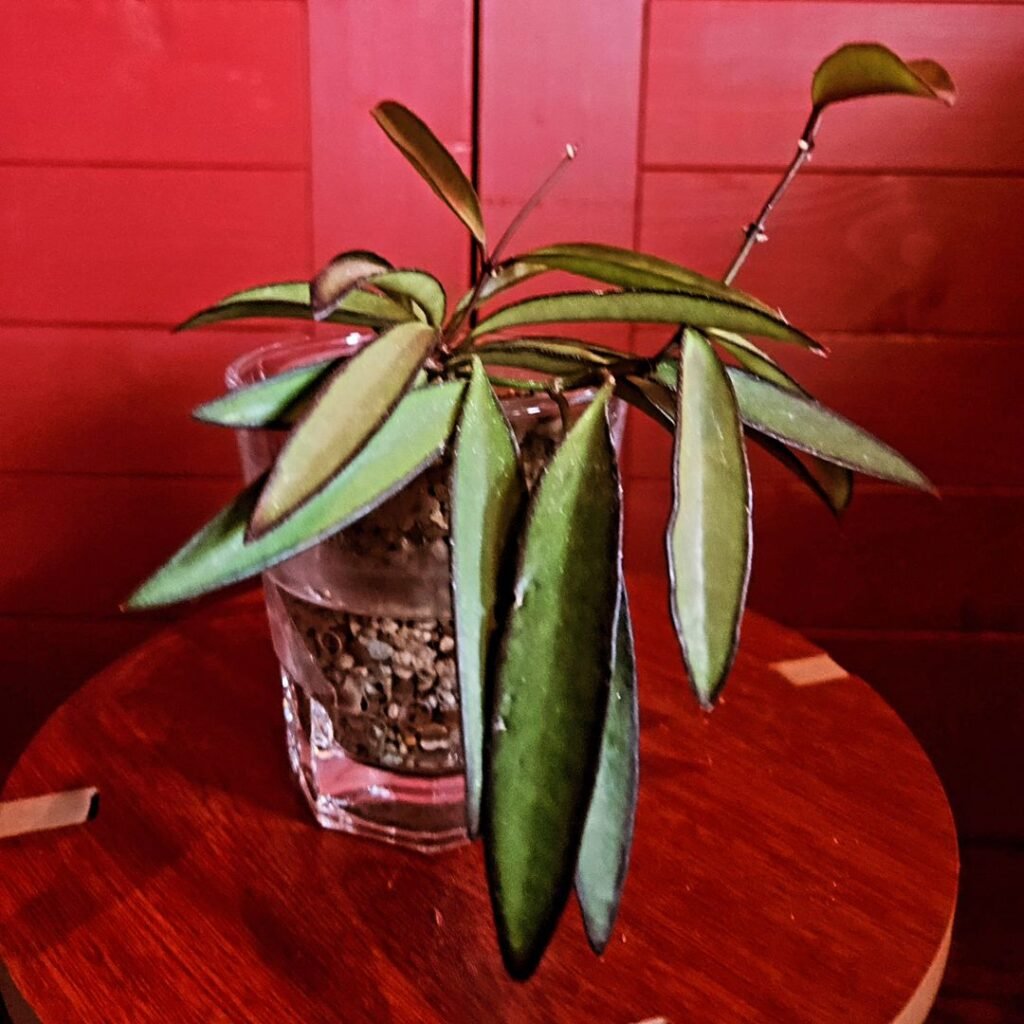
Striking the right balance when it comes to watering is crucial for the health of your Hoya Kentiana. These plants prefer to have their soil slightly dry between waterings, so be sure to check the soil moisture before adding more water.
As a general rule, water your Hoya Kentiana when the top inch or two of soil feels dry to the touch. During the growing season (spring and summer), you may need to water more frequently, while in the cooler months, the plant will require less water. Always check the soil and avoid letting it become completely dry, as this can lead to wilting and stress for the plant.
In addition to proper watering, Hoya Kentiana thrives in humid environments. Aim to maintain a humidity level of 40-60% around your plant. You can achieve this by misting the leaves regularly, using a pebble tray, or placing your Hoya Kentiana in a naturally humid room, such as the bathroom.
Sunlight Requirements

Hoya Kentiana is a plant that loves bright, indirect light. Aim to place your Hoya Kentiana in a spot that receives 4-6 hours of bright, filtered sunlight per day. Avoid direct, intense sunlight, as it can scorch the delicate leaves.
If you notice your Hoya Kentiana’s leaves starting to curl or become discolored, it may be a sign that the plant is receiving too much or too little light. Adjust the location accordingly, and watch for improvement in the plant’s appearance.
Fertilizing

To ensure your Hoya Kentiana thrives, it’s important to provide it with the necessary nutrients. During the growing season (spring and summer), feed your plant with a balanced, diluted liquid fertilizer every 2-4 weeks. Be sure to follow the instructions on the fertilizer package for proper dilution and application.
In the fall and winter, when the plant is in a resting period, you can reduce the frequency of fertilizing to once a month or stop altogether. Overfeeding can lead to issues such as leaf burn or root damage, so it’s important to strike the right balance.
Pruning and Training
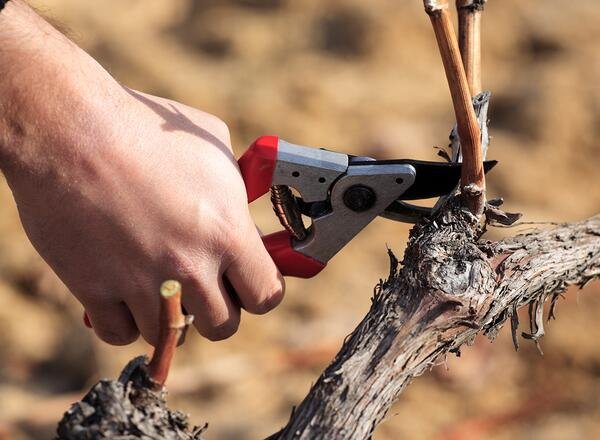
Hoya Kentiana is a vining plant that can become quite long and trailing over time. Pruning and training are essential to maintain its shape and encourage bushier growth.
Start by removing any dead, damaged, or unhealthy leaves and stems. This will help direct the plant’s energy towards new, healthy growth. You can also trim back any wayward or overly long vines to keep the plant tidy and within its desired size.
To encourage a bushier, more compact growth habit, you can use plant clips or supports to train the vines to grow in a specific direction. Gently guide the stems and attach them to the support, allowing the plant to climb and fill out.
Repotting and Dormancy

Hoya Kentiana generally need to be repotted every 2-3 years, or when the plant has outgrown its current pot. The best time to repot is in the spring, when the plant is actively growing.
When repotting, carefully remove the plant from its current pot and inspect the roots. If they are tightly coiled or have begun to circle the pot, it’s time to transplant into a slightly larger container. Choose a pot that is only 1-2 inches wider than the previous one, as Hoya Kentiana prefer a snug fit.
During the winter months, Hoya Kentiana will enter a dormant period. This is a natural process, and the plant will slow down its growth and require less water and fertilizer. Avoid repotting during this time, as the plant is more vulnerable to stress.
Propagation

One of the joys of growing Hoya Kentiana is the ability to propagate it and share the love with others. There are a few different methods you can use to propagate your plant:
Stem Cuttings: Take a 4-6 inch stem cutting just below a leaf node. Allow the cutting to dry out for a day or two, then plant it in a well-draining potting mix. Keep the soil moist but not waterlogged, and place the cutting in a bright, indirect light location.
Leaf Cuttings: Carefully remove a healthy leaf from the plant, ensuring there is a small section of the stem attached. Allow the leaf to dry for a day or two, then plant it in a rooting medium, such as a mix of perlite and vermiculite. Keep the soil moist and provide bright, indirect light.
Air Layering: This method involves encouraging root growth on a stem while it’s still attached to the parent plant. Wrap a section of the stem in damp sphagnum moss, then cover the moss with a piece of plastic and secure it with twine or a rubber band. Once roots have formed, you can cut the stem below the rooted area and plant the new cutting.
Regardless of the propagation method you choose, be patient and keep the soil or medium consistently moist until the new roots begin to form. With the right conditions, your Hoya Kentiana cuttings should root in 4-6 weeks.
Flowering and Blooms
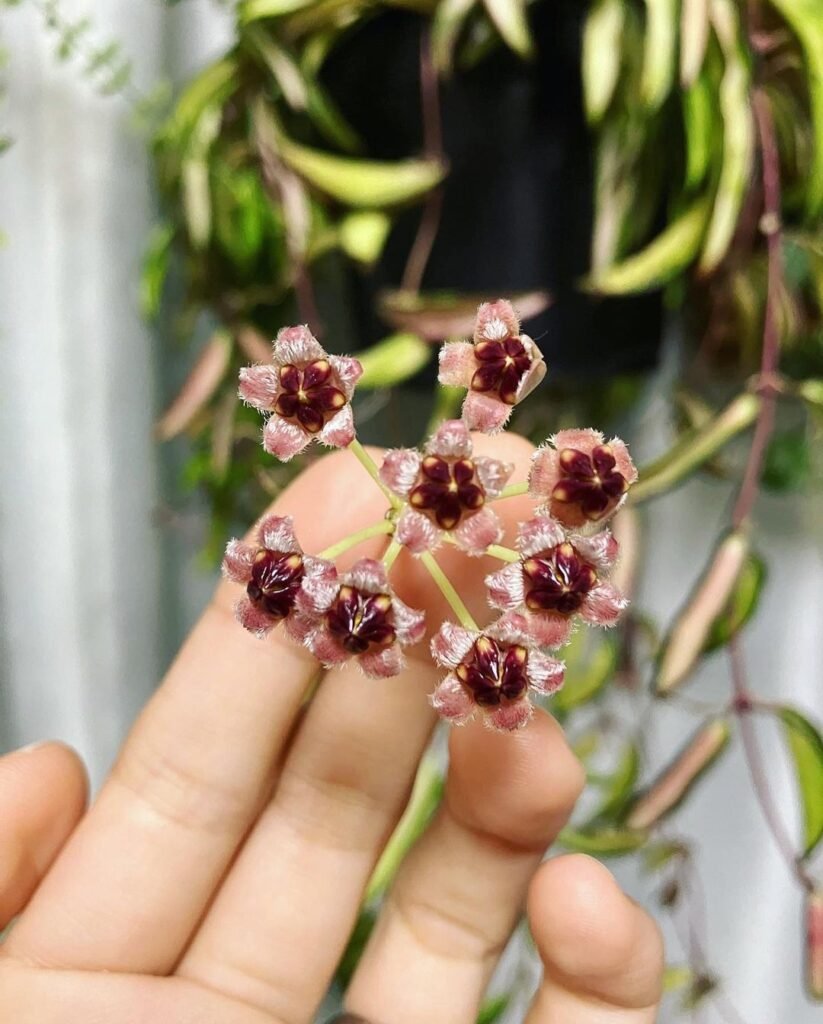
One of the most exciting aspects of growing Hoya Kentiana is the anticipation of its stunning blooms. These plants are known for their clusters of star-shaped, waxy flowers that range in color from white to pink to deep red.
To encourage your Hoya Kentiana to bloom, ensure it is receiving the right amount of light, water, and nutrients. Provide bright, indirect light and maintain a consistent watering schedule. Additionally, allow the plant to become slightly root-bound in its pot, as this can trigger the formation of flower buds.
When your Hoya Kentiana is ready to bloom, you’ll notice small, round buds forming along the vines. These buds will slowly develop into the stunning, star-shaped flowers. The blooms can last for several weeks, providing a beautiful and fragrant display in your indoor space.
Common Pests and Diseases
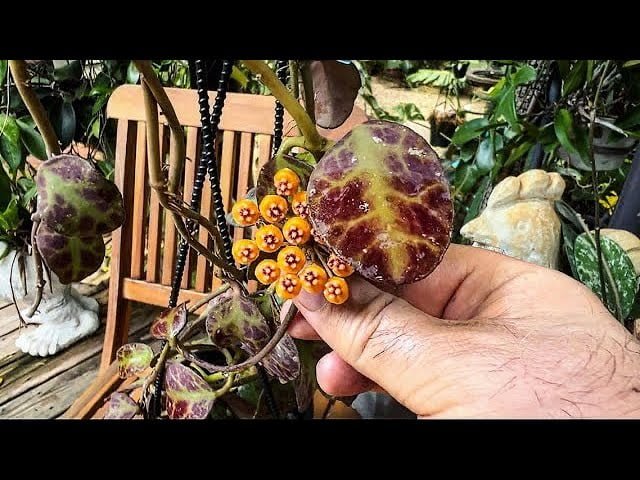
While Hoya Kentiana is generally a hardy plant, it can be susceptible to a few common pests and diseases. Being proactive in monitoring your plant and addressing any issues quickly can help prevent more serious problems.
Pests to watch out for include:
- Mealybugs: These small, white, cottony insects can feed on the plant’s sap, causing yellowing leaves and stunted growth.
- Spider Mites: Tiny, web-spinning arachnids that can cause discoloration and webbing on the leaves.
- Scale Insects: Hard-shelled insects that feed on the plant’s sap, leading to stunted growth and leaf drop.
Common diseases include:
- Root Rot: Caused by overwatering and poor drainage, leading to soft, mushy roots and eventual plant death.
- Fungal Infections: Such as powdery mildew or leaf spot, which can cause discoloration and damage to the foliage.
To prevent and address these issues, be sure to follow proper watering and care practices, maintain good air circulation around the plant, and regularly inspect for any signs of pests or disease. If you do encounter a problem, act quickly to isolate the affected plant, remove any damaged or infected parts, and treat the issue accordingly.
Troubleshooting Common Issues Even with the best care, your Hoya Kentiana may occasionally encounter some challenges. Here are a few common issues and how to address them:
Leaves Turning Yellow or Dropping Possible causes:
- Overwatering or poor drainage
- Insufficient light
- Nutrient deficiency
- Temperature stress
Solution: Check the soil moisture and adjust your watering schedule accordingly. Ensure the plant is receiving enough bright, indirect light. Consider fertilizing with a balanced, diluted liquid fertilizer. Lastly, make sure the plant is not exposed to sudden temperature changes or drafts.
Wilting or Shriveled Leaves Possible causes:
- Underwatering
- Low humidity
- Root rot
Solution: Water the plant when the top inch or two of soil is dry, and mist the leaves regularly to increase humidity. If the roots appear damaged or rotted, repot the plant in fresh, well-draining soil.
Stunted Growth or Lack of Blooms Possible causes:
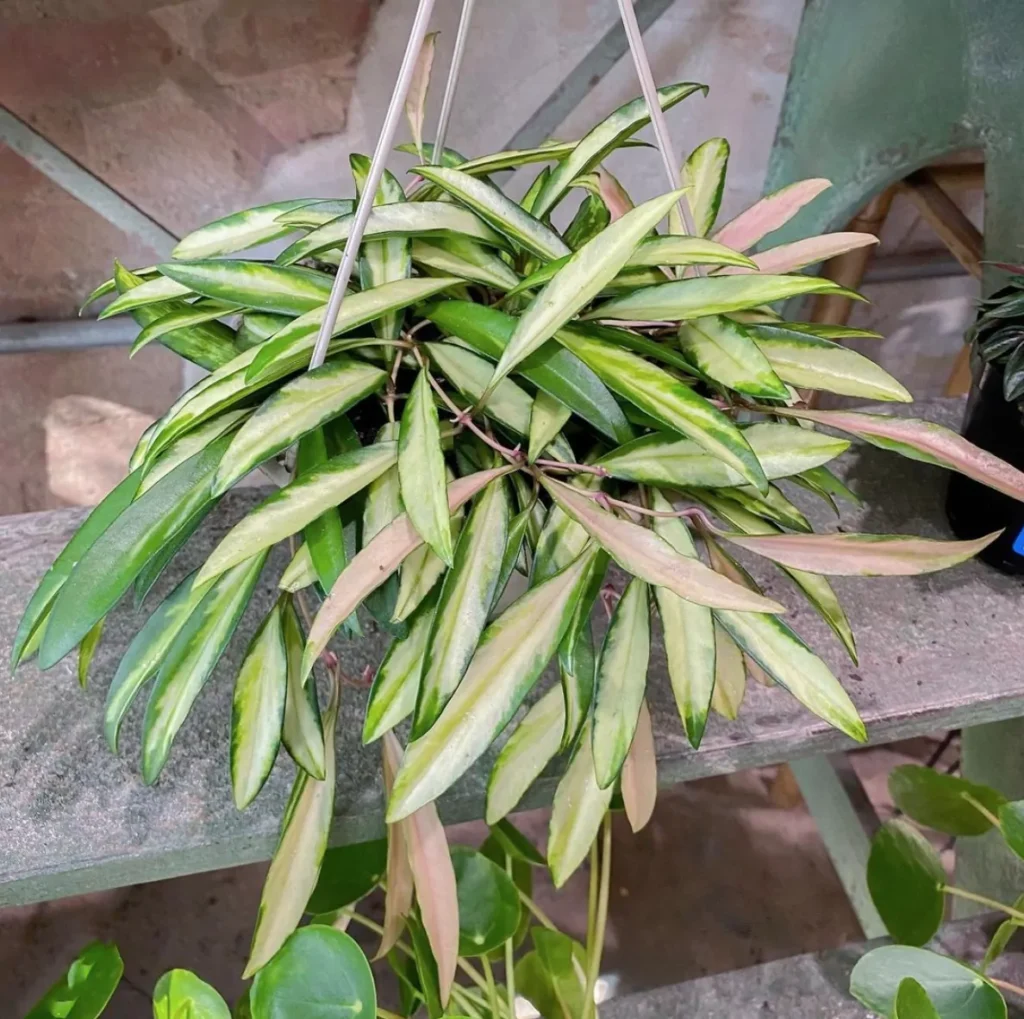
- Insufficient light
- Root-bound plant
- Improper fertilization
Solution: Move the plant to a brighter location with 4-6 hours of indirect sunlight. Repot the plant in a slightly larger container if it’s root-bound. Ensure you are fertilizing the plant during the growing season with a balanced, diluted liquid fertilizer.
By understanding and addressing these common issues, you can keep your Hoya Kentiana thriving and enjoying its lush foliage and stunning blooms.
Conclusion
Hoya Kentiana is a captivating and rewarding houseplant that can add a touch of tropical elegance to any indoor space. With the right care and attention, this plant can thrive and reward you with its beautiful, waxy flowers.
Remember to provide your Hoya Kentiana with the appropriate soil, water, light, and humidity levels. Regular pruning and training can help maintain its shape and encourage bushy growth. Be patient when it comes to propagation and flowering, and keep an eye out for any pests or diseases that may arise.
By following the guidance in this comprehensive care guide, you’ll be well on your way to becoming a Hoya Kentiana expert and enjoying the many delights this plant has to offer. Happy growing!
Nice article
Pingback: Whale Fin Snake Plant Care Guide -
Pingback: How to Grow and Care for Lady Plants Indoors gardeners Sch
Pingback: Philodendron Paraiso Verde Care Guide -
Pingback: Hoya Kentiana Care Guide | Gardening Guide | S...
Pingback: Hoya Kentiana Care Guide Garderners School | Ga...
Pingback: Philodendron Micans Care Guide gardeners Schools